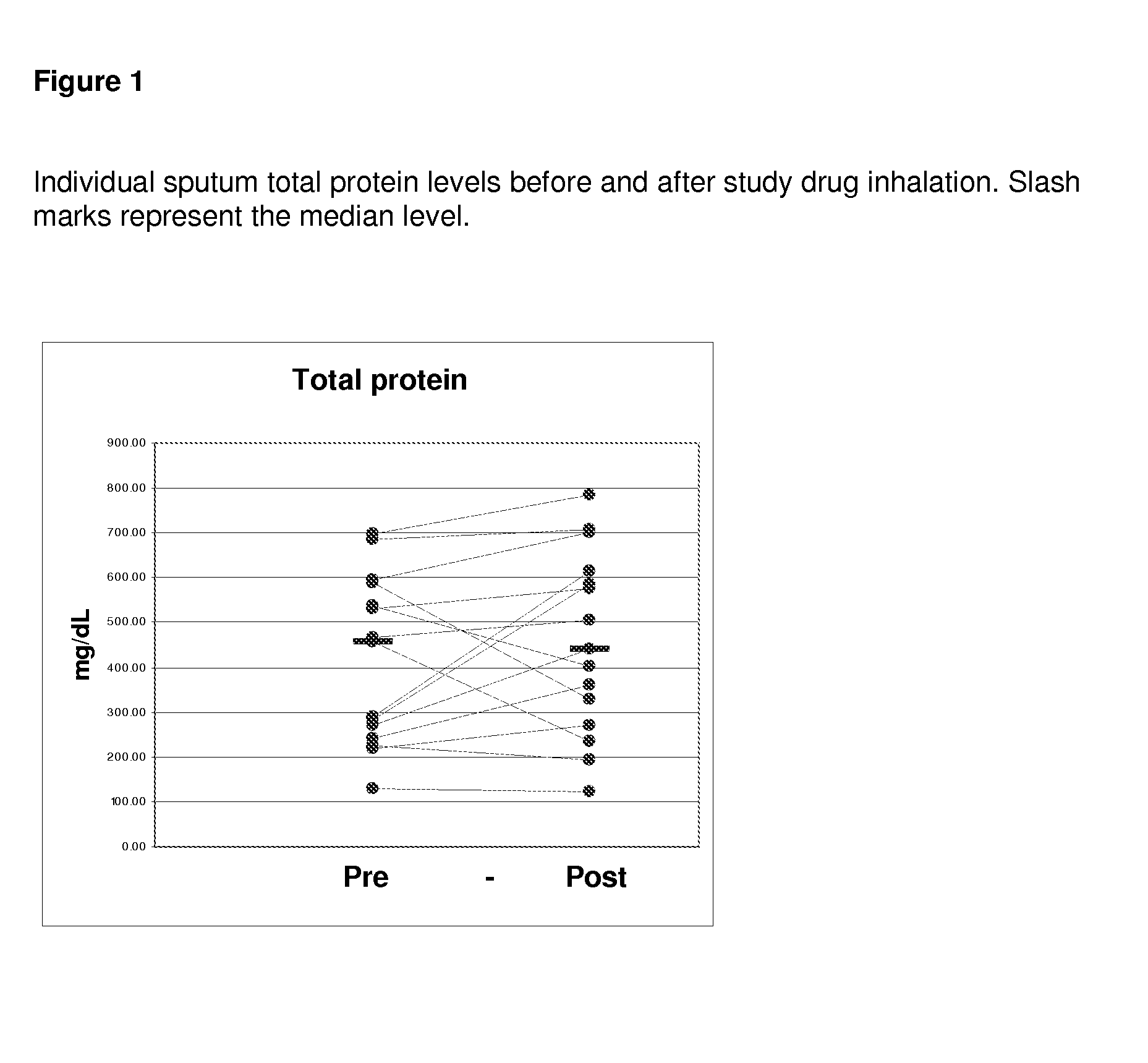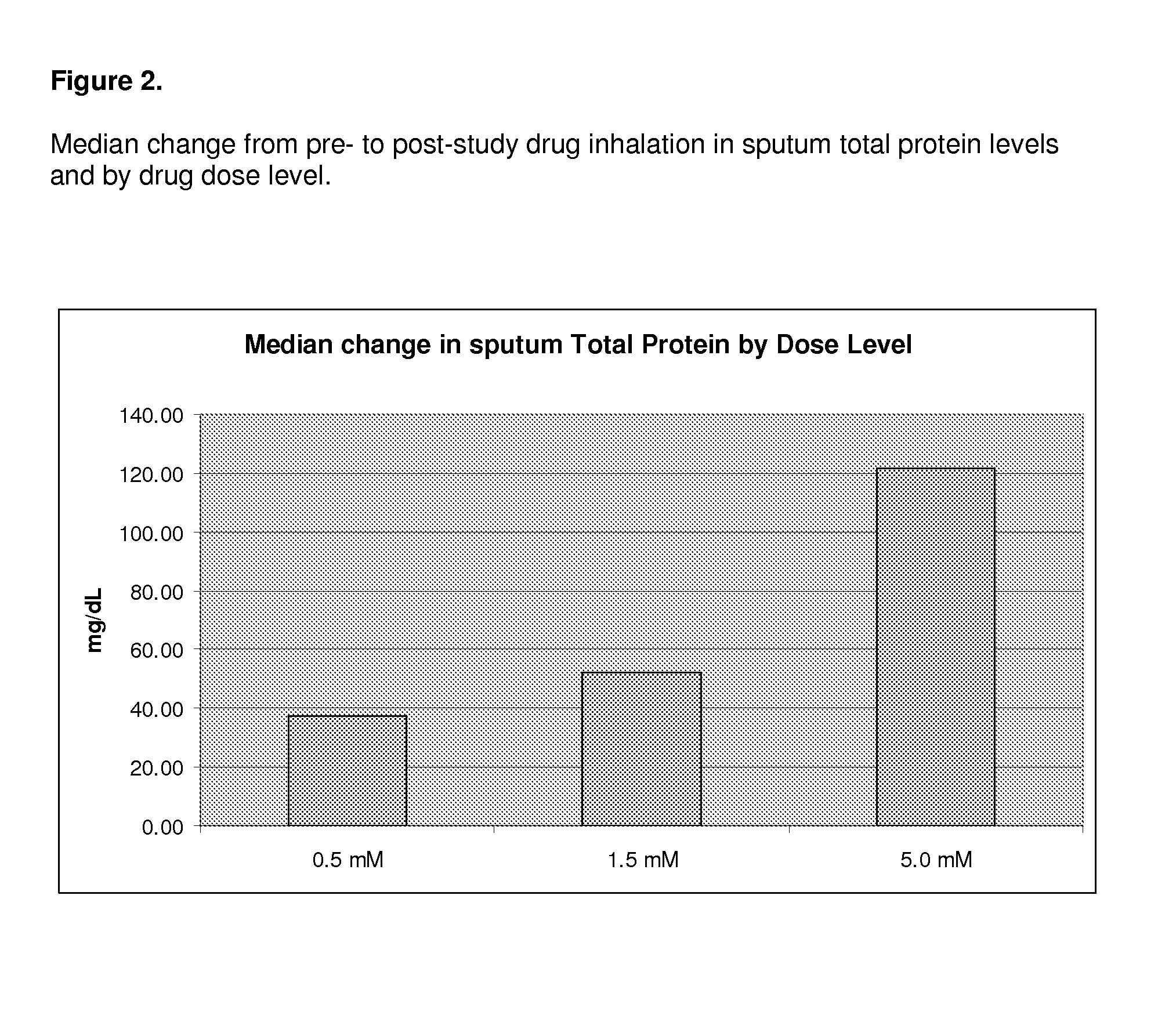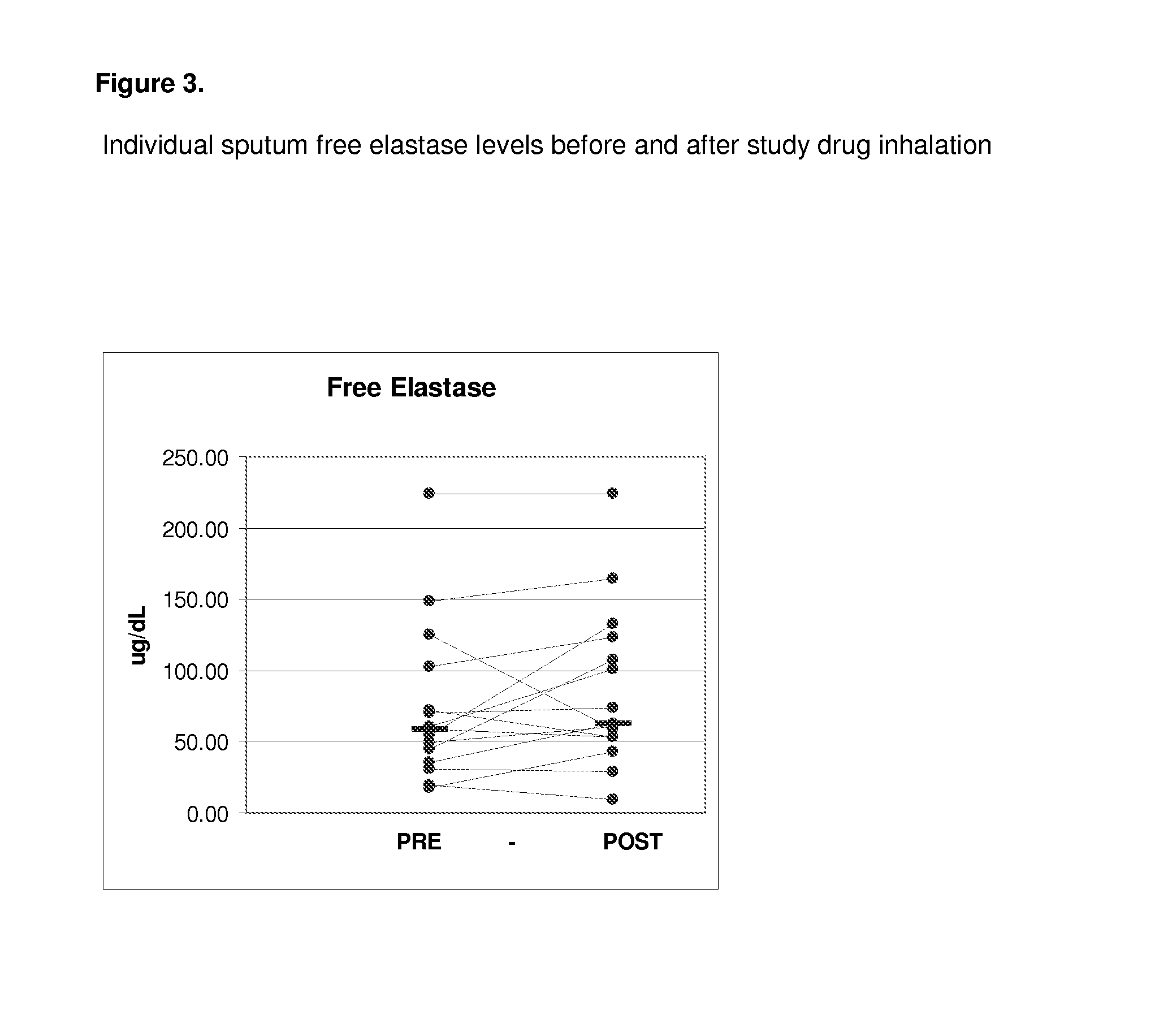Method for Treating a Pulmonary Disease State in Mammals by Up Regulating Indigenous in vivo Levels of Inflammatory Agents in Mammalian Cells
a pulmonary disease and mammalian cell technology, applied in the field of mammals' methods for treating a pulmonary disease state, can solve the problems of imbalance in the immune system, high infection rate, eventual onset of infections and injury to normal cells and membranes,
- Summary
- Abstract
- Description
- Claims
- Application Information
AI Technical Summary
Benefits of technology
Problems solved by technology
Method used
Image
Examples
example 1
Inhaled Sodium Pyruvate for the Treatment of Cystic Fibrosis Double Blind, Placebo-Controlled, Safety Study Sputum Inflammatory Biomarkers
[0083]All of the enrolled and dosed subjects were able to provide sputum samples for analysis before and after exposure to study drug (sodium pyruvate for inhalation at 0.5, 1.5, and 5.0 mM levels). The subjects were given 5 ml samples to inhale. Specimens were of good quality for the planned assays.
[0084]The 0.5 mM levels of sodium pyruvate using 5 ml samples contain 0.28 mg of sodium pyruvate. The 5 mM levels of sodium pyruvate using 5 ml contain 2.8 mg of sodium pyruvate.
[0085]Samples were divided into two main aliquots after processing. The first aliquot was left untreated to be able to assay for the activity of free elastase. The second aliquot was treated with protease inhibitors pheylmethanesulfonylfluoride (PMSF) and ethylenediamine tetraacetic acid (EDTA) to stop any degradation of the cytokines of interest (IL-6, IL-8, IL-10, IL-17, and ...
example 2
Inhaled Sodium Pyruvate for the Treatment of Cystic Fibrosis and Other Lung Diseases
[0094]Cystic fibrosis (CF) is the most common, lethal inherited disease of Caucasians. Approximately 30,000 people in the United States and 70,000 worldwide have a diagnosis of CF. It is caused by mutations in the cystic fibrosis transmembrane regulator (CFTR) gene. The clinical manifestations characteristic of CF include progressive bronchiectatic lung disease with thick mucus production and colonization by Pseudomonas aeruginosa. The CFTR gene mutation results in altered cell transport properties, which affect both chloride and glutathione secretion. Chronic inflammation, associated with activated neutrophils and macrophages, is a common feature of CF. Highly reactive toxic oxygen (superoxide anion, free hydroxyl radical, hydrogen peroxide) and nitrogen species (NO, peroxynitrites) are abundant in the chronic inflammatory response in CF and appear to playa prominent role in the pathogenesis of this...
example 3
Nicotine / Pyruvate Inhalation Delivery to the Sinuses or Lungs
[0096]Nicotine was formulated as a modified sodium pyruvate 20 mM nasal solution which was then administered as an inhaled mist to the lungs or nasal cavity. A number of clinical test patients squirted each nostril three times each, 2 times per day which amounted to 2.94 mg-4.2 mg of pyruvate and approximately 0.020 mg to 0.5 mg of nicotine per daily dose. A patient that used Nicotrol (nicotine nasal spray) for smoking cessation was treated with a nasal spray of sodium pyruvate 20 mM to 40 mM prior to using his nasal inhaler. Each metered dose of Nicotrol delivers 0.5 mg of nicotine. The administration of the 20 mM spray of nicotine / sodium pyruvate solution allowed the patient to control his nicotine addiction using less medication and eliminated the irritation and nose soreness associated with nasal nicotine formulations such as Nicotrol. Nicotine inhalation can increase the risks of nasal and lung infections and nicotine...
PUM
| Property | Measurement | Unit |
|---|---|---|
| solubility | aaaaa | aaaaa |
| molecular weight | aaaaa | aaaaa |
| solubility | aaaaa | aaaaa |
Abstract
Description
Claims
Application Information
 Login to View More
Login to View More - R&D
- Intellectual Property
- Life Sciences
- Materials
- Tech Scout
- Unparalleled Data Quality
- Higher Quality Content
- 60% Fewer Hallucinations
Browse by: Latest US Patents, China's latest patents, Technical Efficacy Thesaurus, Application Domain, Technology Topic, Popular Technical Reports.
© 2025 PatSnap. All rights reserved.Legal|Privacy policy|Modern Slavery Act Transparency Statement|Sitemap|About US| Contact US: help@patsnap.com



